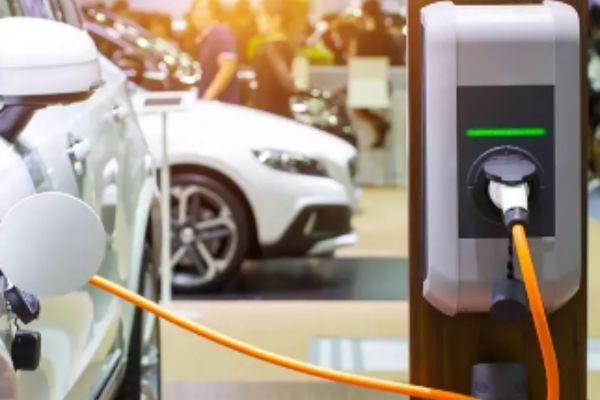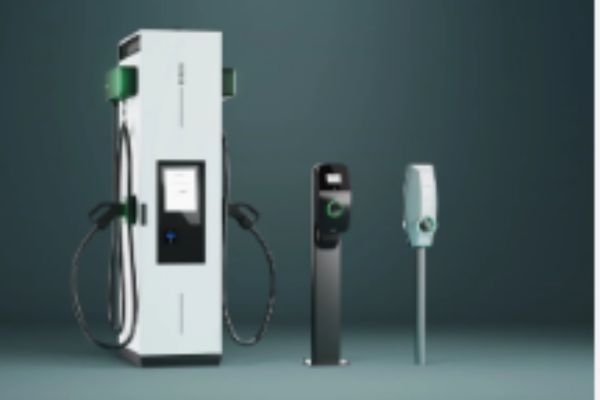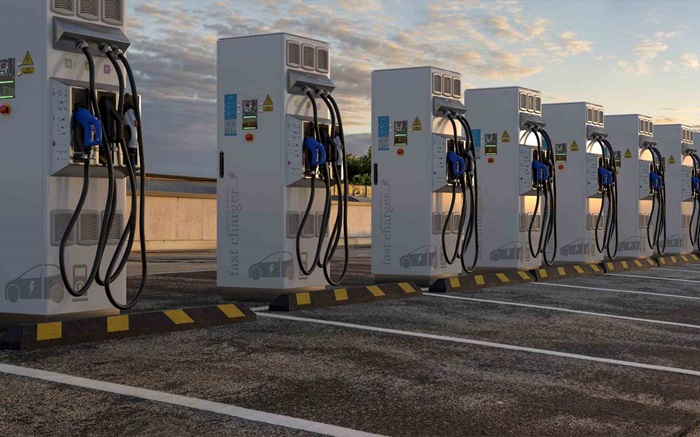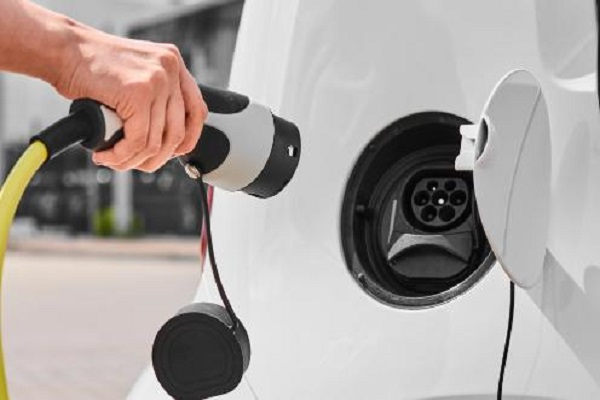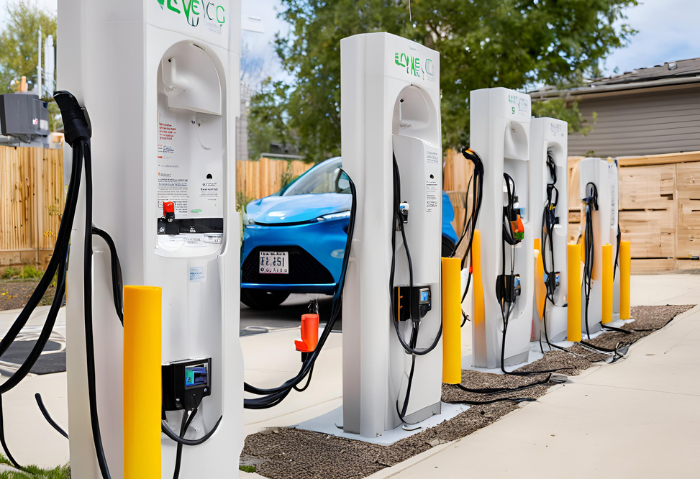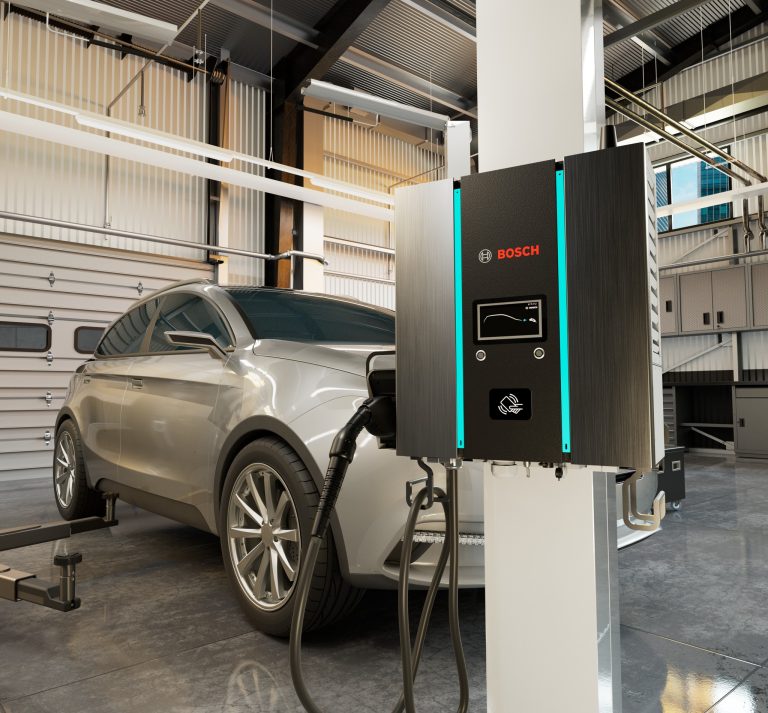Level 3 EV Charger for Tesla: Everything You Need to Know
Tesla takes a different approach to Level 3 charging compared to other electric vehicle manufacturers. Instead of relying on a universal charging standard, Tesla utilizes its proprietary network of Superchargers. This guide will provide everything you need to know about Level 3 charging for your Tesla.
Overview of Level 3 EV Charging for Tesla
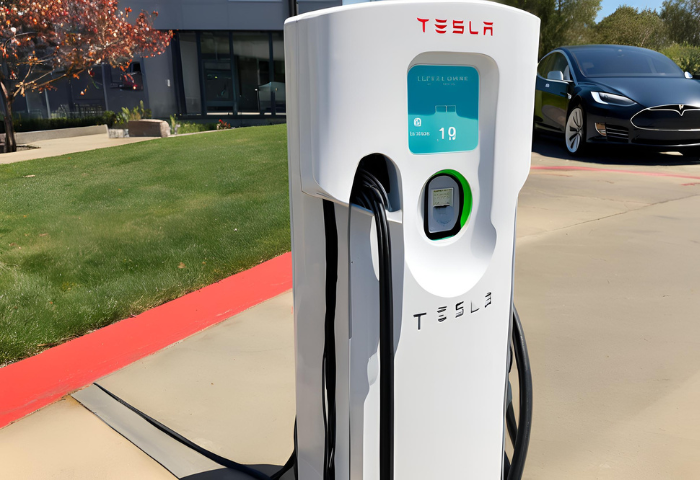
Definition and Importance of Level 3 Charging
Level 3 charging, also known as DC fast charging, refers to a high-power charging method for electric vehicles (EVs) that enables rapid recharging of the vehicle’s battery. Unlike Level 1 and Level 2 chargers, which use alternating current (AC) and are typically found in homes, workplaces, and public locations, Level 3 chargers use direct current (DC) and provide much faster charging speeds.
Rapid charging speeds:
Level 3 chargers can deliver significantly higher charging power compared to Level 1 and Level 2 chargers, enabling EVs to recharge their batteries to a usable level in a relatively short amount of time. This rapid charging capability is essential for enabling long-distance travel and supporting the widespread adoption of EVs as viable alternatives to traditional internal combustion engine vehicles.
Convenience for Road Trips:
Level 3 chargers are strategically located along highways and major travel routes, making them essential for long-distance travel. With Level 3 chargers, EV owners can recharge their vehicles quickly during road trips, reducing charging stops and minimizing travel time. This convenience helps alleviate range anxiety and makes EVs more practical for a broader range of driving scenarios.
Expanded Charging Infrastructure:
The deployment of Level 3 charging infrastructure, including networks of DC fast chargers, contributes to the overall expansion of EV charging infrastructure. Level 3 chargers complement Level 1 and Level 2 chargers by providing fast charging options for drivers who need to recharge quickly while on the go. As the availability of Level 3 chargers increases, it enhances the accessibility and convenience of EV charging for drivers, further incentivizing EV adoption.
Support for Electrification Goals:
Level 3 charging plays a crucial role in supporting government initiatives and industry efforts to promote electric vehicle adoption and reduce greenhouse gas emissions. Level 3 chargers speed up the transition to a cleaner, more sustainable transportation system run on renewable energy sources by enabling quick and convenient charging.
Differences Between Level 1, Level 2, and Level 3 Charging
| Feature | Level 1 Charging | Level 2 Charging | Level 3 Charging (DC Fast Charging) |
| Voltage | 120 volts | 240 volts | 400 volts (approx.) |
| Current | Typically, up to 16 amps | Typically, up to 40 amps | Typically, up to 500 amps |
| Power Output | Up to 1.9 kW | Up to 7.7 kW | 50 kW to 350 kW (or higher) |
| Charging Time (for 100-mile range) | 8 to 20 hours | 4 to 8 hours | 20 minutes to 1 hour |
| Connector | Standard household outlet (NEMA 5-15) | J1772 connector | CCS (Combo), CHAdeMO, Tesla Supercharger (proprietary) |
| Typical Locations | Residential, workplaces | Residential, workplaces, and public locations | Public charging stations, highways |
| Cost | Relatively low initial cost | Moderate initial cost | Higher initial cost |
| Installation Requirements | No special installation required; it uses standard household outlet | Requires dedicated charging station;; professional installation recommended | Requires specialized charging infrastructure; professional installation required |
| Application | Overnight charging is suited for low daily driving distances | Daily or overnight charging is suitable for most EV owners | Rapid charging, long-distance travel, road trips |
Typical Locations for Level 3 Chargers
Highways and Major Roads: Level 3 chargers are commonly installed at rest stops, service stations, and travel plazas along highways and major roads. These locations allow EV drivers to recharge their vehicles quickly during long-distance travel, reducing range anxiety and enabling uninterrupted journeys.
Urban Areas: Level 3 chargers are often deployed in urban areas, including city centers, shopping districts, and public parking facilities. These chargers provide convenient access to fast charging for EV owners who live, work, or visit urban areas, allowing them to recharge their vehicles quickly while running errands or engaging in recreational activities.
Public Charging Stations: Public charging stations run by utilities, charging networks, or municipalities frequently have Level 3 chargers installed. These stations may be located in parking lots, garages, or other public spaces accessible to the general public. Public charging stations with Level 3 chargers offer fast charging options for EV owners who need to recharge their vehicles while away from home or work.
Commercial and Retail Locations: Level 3 chargers are sometimes installed at commercial and retail locations such as shopping centers, restaurants, hotels, and entertainment venues. These locations provide added convenience for EV owners, allowing them to recharge their vehicles while engaging in leisure activities, dining out, or shopping.
Travel Destinations: Level 3 chargers may be installed at popular travel destinations such as tourist attractions, national parks, and recreational areas. These chargers cater to EV owners who travel for leisure and may need to recharge their vehicles while exploring scenic locations or participating in outdoor activities.
Compatibility with Tesla Vehicles
| Level 3 Charger Type | Tesla Superchargers | Third-Party CCS Chargers | Third-Party CHAdeMO Chargers |
| Tesla Model S | ✔️ (Direct connection) | Requires Tesla CCS Combo 2 Adapter | Requires Tesla CHAdeMO Adapter |
| Tesla Model 3 | ✔️ (Direct connection) | Requires Tesla CCS Combo 2 Adapter | Requires Tesla CHAdeMO Adapter |
| Tesla Model X | ✔️ (Direct connection) | Requires Tesla CCS Combo 2 Adapter | Requires Tesla CHAdeMO Adapter |
| Tesla Model Y | ✔️ (Direct connection) | Requires Tesla CCS Combo 2 Adapter | Requires Tesla CHAdeMO Adapter |
Time Required for Charging Tesla Models
| Charging Method | Typical Charging Speed | Time Required for 100 miles of Range (Approximate) | Time Required for Full Charge (Approximate) |
| Tesla Superchargers | Up to 250 kW | 20-30 minutes | Varies based on battery size and state of charge |
| Level 2 Chargers | Up to 7.7 kW | 8-12 hours | Varies based on battery size and state of charge |
| Level 1 Chargers | Up to 1.9 kW | 24-36 hours | Varies based on battery size and state of charge |
| Home Charging (Level 2) | Up to 7.7 kW | 8-12 hours | Varies based on battery size and state of charge |
Tesla Supercharger Network
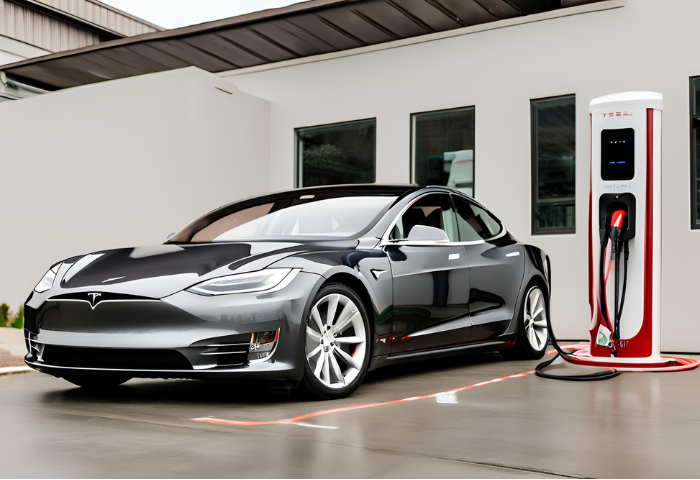
Explanation of the Tesla Supercharger
High-Speed Charging: Tesla Superchargers offer rapid charging speeds, providing up to 250 kW of power (and in some cases even higher). This enables Tesla owners to recharge their vehicles quickly and conveniently, adding significant range in a short amount of time.
Proprietary Connector: Tesla vehicles come equipped with a proprietary charging connector that is specifically designed for use with Tesla Superchargers. This connector allows Tesla owners to plug their vehicles directly into the Supercharger without the need for adapters or additional equipment.
Extensive Network: The Tesla Supercharger network is strategically deployed along highways, major travel routes, and in urban areas to provide comprehensive coverage for Tesla owners. With thousands of Supercharger stations worldwide, Tesla drivers have access to fast charging options wherever they go, reducing range anxiety and enabling long-distance travel.
Navigation Integration: Tesla vehicles feature built-in navigation systems that automatically route drivers to nearby Superchargers when needed. The navigation system considers factors such as charging time, availability, and route optimization to ensure a seamless charging experience for Tesla owners.
Payment and Billing: Supercharger usage is billed directly to the Tesla owner’s account, typically on a per-kilowatt-hour (kWh) basis or per-minute basis, depending on the region. Tesla owners can view charging costs and payment details through their vehicle’s touchscreen or the Tesla mobile app.
Continuous Expansion: Tesla continues to expand and upgrade its Supercharger network to meet growing demand and support the increasing number of Tesla vehicles on the road. New Supercharger stations are regularly added to accommodate more charging stalls and provide faster charging speeds, enhancing the overall charging experience for Tesla owners.
Global Distribution of Tesla Superchargers
North America:
Tesla’s largest market, North America, has a dense network of Supercharger stations covering the United States, Canada, and Mexico. Superchargers are strategically located along major highways, urban centers, and popular travel routes, providing extensive coverage for Tesla owners across the continent.
Europe:
Tesla has a significant presence in Europe, with Supercharger stations spread across countries such as the United Kingdom, Germany, France, Norway, the Netherlands, Sweden, and many others. European Superchargers support long-distance travel and enable Tesla owners to explore various regions without range anxiety.
Asia-Pacific:
Tesla has been expanding its presence in the Asia-Pacific region, with Supercharger stations deployed in countries such as China, Japan, Australia, and South Korea. Superchargers in these regions cater to Tesla owners’ needs for rapid charging and support the growing adoption of electric vehicles in Asia.
Middle East and Africa:
Tesla has started expanding its Supercharger network into the Middle East and Africa, with stations being deployed in countries such as the United Arab Emirates, South Africa, and Israel. These superchargers provide charging infrastructure for Tesla owners in emerging markets and support the company’s global expansion efforts.
Other Regions:
Tesla continues to explore opportunities to expand its Supercharger network into other regions, including South America and additional countries in Asia and Africa. As demand for electric vehicles grows and market conditions evolve, Tesla may deploy Superchargers in new locations to meet the needs of Tesla owners worldwide.
Cost of Charging at a Tesla Supercharger
Per-Kilowatt-Hour (kWh) Pricing: In many regions, Tesla Superchargers utilize a per-kilowatt-hour (kWh) pricing model, where users are billed based on the amount of energy (kWh) consumed during the charging session. The cost per kWh may vary depending on local electricity rates, regulatory requirements, and other factors.
Per-Minute Pricing: In some regions, Tesla Superchargers may use a per-minute pricing model instead of or in addition to per-kWh pricing. With per-minute pricing, users are billed based on the duration of the charging session, regardless of the amount of energy consumed. This pricing model aims to incentivize faster charging speeds and efficient use of Supercharger stalls.
Dynamic Pricing: Tesla may implement dynamic pricing for Superchargers, where the cost of charging can fluctuate based on factors such as demand, time of day, and charging speed. During peak demand periods or at busy Supercharger locations, prices may be higher to manage congestion and encourage off-peak charging.
Local Regulations and Taxes: Local government-imposed regulations, taxes, and fees may also have an impact on the cost of charging at a Tesla Supercharger. These additional charges can vary by region and may be included in the overall cost of charging.
Payment Method: Tesla Superchargers typically accept payment through the Tesla mobile app or directly through the vehicle’s touchscreen interface. Users may link a payment method to their Tesla account to facilitate seamless payment and billing for charging sessions.
Promotions and Incentives: Tesla occasionally offers promotions, discounts, or incentives for Supercharger usage, such as free Supercharging credits for new vehicle purchases or referral programs. These promotions can influence the overall cost of charging at a Tesla Supercharger.
Supercharger V3: Features and Benefits
Higher Charging Speeds: Supercharger V3 delivers significantly faster charging speeds compared to previous generations, with peak rates of up to 250 kW per vehicle. This enables Tesla owners to recharge their vehicles more quickly, adding up to 1,000 miles of range per hour under optimal conditions.
Liquid-Cooled Cables: Supercharger V3 stations feature liquid-cooled charging cables, which help maintain optimal charging performance and reliability, especially during high-demand charging sessions. The liquid-cooled cables can handle higher power levels without overheating, ensuring efficient charging for Tesla vehicles.
On-Route Battery Warm-up: Supercharger V3 stations are equipped with technology that preconditions the vehicle’s battery before charging, optimizing charging efficiency and reducing overall charging time. This on-route battery warm-up feature helps maximize charging speeds, particularly in colder climates or when the battery is not at optimal operating temperature.
Shared Power between Stalls: Supercharger V3 stations employ a shared power architecture, where charging power is dynamically allocated between multiple vehicles at the same station. This ensures that each vehicle receives an appropriate amount of power based on its state of charge and charging requirements, maximizing overall station efficiency.
Improved Network Capacity: Supercharger V3 stations are designed to handle higher demand and support increased network capacity, allowing Tesla to deploy more charging stalls at each location without compromising charging speeds. This scalability helps accommodate growing demand for electric vehicle charging and reduces wait times for Tesla owners.
Seamless Integration with Tesla Vehicles: Supercharger V3 stations seamlessly integrate with Tesla vehicles’ onboard systems, providing real-time charging information, navigation guidance to nearby stations, and automatic billing for charging sessions. This integration enhances the overall charging experience for Tesla owners, making it easier and more convenient to use Supercharger V3 stations.
Support for Future Vehicle Models: Supercharger V3 stations are compatible with current and future Tesla vehicle models, ensuring that Tesla owners can continue to benefit from fast and reliable charging infrastructure as Tesla expands its vehicle lineup and introduces new technologies.
Expansion Plans for the Supercharger Network
Geographic Expansion:
Tesla is focused on expanding the Supercharger network into new regions and countries to provide coverage for Tesla owners worldwide. This includes deploying Supercharger stations in areas where EV adoption is growing rapidly and where demand for charging infrastructure is increasing.
Highway and Urban Coverage:
Tesla aims to provide comprehensive coverage along highways, major travel routes, and urban areas to support long-distance travel and daily commuting needs. Supercharger stations are strategically located to facilitate convenient charging access for Tesla owners, both during road trips and in urban environments.
Stall Expansion:
Tesla is increasing the number of charging stalls at existing Supercharger stations and deploying new stations with larger numbers of stalls to accommodate higher demand and reduce wait times for charging. This includes expanding existing sites and adding new locations to the network to ensure adequate charging capacity for Tesla owners.
High-Density Areas:
Tesla prioritizes deploying Supercharger stations in high-density areas with a significant concentration of Tesla vehicles and EV drivers. This includes urban centers, suburban areas, and locations with high levels of EV adoption, where demand for charging infrastructure is particularly strong.
Integration with Destination Charging:
Tesla’s Supercharger expansion plans may also involve integration with its Destination Charging program, which provides charging infrastructure at hotels, restaurants, shopping centers, and other destinations. By combining Supercharger stations with Destination Charging locations, Tesla offers a comprehensive charging solution for Tesla owners, whether they’re on the road or at their destination.
Technology Upgrades:
Tesla continues to innovate and improve its Supercharger technology to enhance charging speeds, reliability, and efficiency. This includes deploying next-generation Supercharger hardware, such as Supercharger V3, which offers faster charging speeds and improved performance compared to previous generations.
Technical Specifications of Level 3 Chargers

Power Output and Charging Speed
| Charger Type | Power Output (kW) | Typical Charging Speed (mi/hr) |
| Level 1 Charger | Up to 1.9 kW | 3-5 mi/hr |
| Level 2 Charger | Up to 7.7 kW | 15-30 mi/hr |
| Level 3 Charger (DC Fast) | 50 kW to 350 kW (or higher) | 200-1,000+ mi/hr |
Connector Types: CCS vs. Tesla
| Connector Type | CCS (Combined Charging System) | Tesla |
| Type | Standard connector for multiple EV brands | Tesla proprietary connector |
| Compatibility | Widely adopted by various EV manufacturers | Exclusive to Tesla vehicles |
| Design | Combo 1 (North America) or Combo 2 (Europe) | Tesla-specific design |
| DC Fast Charging | Yes | Yes (Tesla Superchargers) |
| AC Charging | Yes | Yes (with appropriate adapters) |
| Vehicle Models | Various EV models from different manufacturers | Tesla Model S, Model 3, Model X, and Model Y |
| Availability | Increasing availability at public charging stations | Exclusive to Tesla Supercharger network |
Infrastructure Requirements
| Infrastructure Requirement | Level 1 Charger | Level 2 Charger | Level 3 Charger (DC Fast) |
| Power Supply | Standard household outlet (120V) | Higher-voltage electrical supply (typically 240V) | High-voltage direct current (DC) power supply (usually 400V or higher) |
| Electrical Circuits | No special circuits required | Dedicated electrical circuits may be required | High-power electrical infrastructure required |
| Installation | Plug into existing outlet | Wall or pedestal mount; professional installation recommended | Professional installation coordination with utilities may be needed |
| Location | Homes, workplaces, and public spaces | Parking lots, garages, and commercial areas | Highways, major travel routes, and public charging stations |
| Signage and Accessibility | Basic signage for charging station | Signage, parking markings, and accessibility considerations | Advanced signage, safety features, accessibility compliance |
| Network Connectivity | Not required for basic operation | Optional for monitoring and payment processing | Recommended for network connectivity, monitoring, and payment processing |
Software and Connectivity Features
| Feature | Description |
| Remote Monitoring | Allows operators to remotely monitor charging stations, check status, and receive alerts or notifications |
| Payment Processing | Integration with payment systems for user authentication, billing, and payment processing |
| User Authentication | Methods for user authentication, such as RFID cards, mobile apps, or payment cards |
| Charging Session Management | Ability to start, stop, and manage charging sessions remotely, including scheduling and reservations |
| Energy Management | Optimizes charging schedules to minimize energy costs, balance load, or support renewable energy sources |
| Firmware Updates | Over-the-air (OTA) updates to install firmware updates, bug fixes, and security patches |
| Data Analytics | Collects and analyzes charging data for usage trends, energy consumption, and performance monitoring |
| Network Connectivity | Connectivity options such as Wi-Fi, cellular, or Ethernet for communication with backend systems |
| Smart Grid Integration | Integration with smart grid systems for demand response, grid balancing, and load management |
| Accessibility Features | Features to support accessibility compliance, such as ADA-compliant interfaces and signage |
| User Interface | Intuitive and user-friendly interface for users to initiate and monitor charging sessions |
Safety Standards and Certifications
| Standard/Certification | Description |
| UL (Underwriters Laboratories) | Independent safety certification ensures compliance with safety standards and requirements for electrical equipment |
| NEC (National Electrical Code) | Set of standards for safe electrical installation, wiring, and equipment in the United States |
| IEC (International Electrotechnical Commission) | International standards organization for electrical and electronic technologies |
| CE Marking (Conformité Européenne) | Indicates compliance with European Union (EU) safety, health, and environmental protection standards |
| ISO 15118 (International Organization for Standardization) | Standard for communication between EVs and charging infrastructure, including plug-and-charge functionality |
| ADA (Americans with Disabilities Act) | Accessibility standards ensure EV charging stations are usable by individuals with disabilities |
| FCC (Federal Communications Commission) | Ensures compliance with electromagnetic interference (EMI) regulations for wireless communication equipment |
| ETL Listed | Certification by Intertek for compliance with safety and performance standards |
Installation and Maintenance of Level 3 EV Chargers
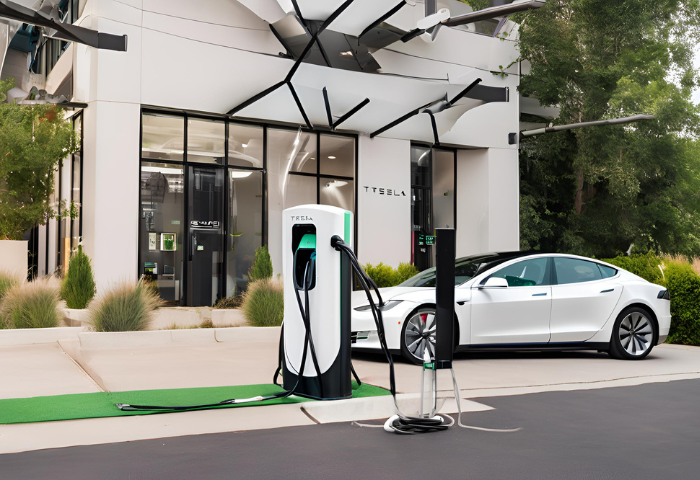
Site Selection Criteria
High Traffic Areas: Choose locations with high traffic volumes and visibility to maximize the usage of Level 3 chargers. Ideal sites include highway rest stops, major transportation hubs, commercial centers, and popular tourist destinations.
Proximity to Highways: Place Level 3 chargers near highways and major travel routes to cater to long-distance travelers and provide convenient charging options for EV owners on road trips.
Accessibility and Visibility: Ensure the site is easily accessible to EV drivers and highly visible from the road. Locations with ample parking space, clear signage, and good lighting enhance the user experience and safety.
Adequate Power Supply: Confirm the availability of a sufficient power supply to support Level 3 chargers. Coordinate with local utility providers to assess the electrical infrastructure and ensure the user site can accommodate the required power capacity.
Space for Multiple Stalls: Allocate space for multiple charging stalls to accommodate simultaneous charging sessions and reduce wait times for EV owners. Consider future expansion needs and ensure sufficient space for additional chargers if demand increases over time.
Safety and Security: Prioritize safety and security considerations when selecting a site. Choose well-lit, monitored locations with security features such as surveillance cameras and emergency call boxes to enhance user safety and deter vandalism or theft.
Accessibility Compliance: Ensure the site complies with accessibility standards, including provisions for disabled parking spaces, wheelchair accessibility, and appropriate signage in accordance with local regulations and the Americans with Disabilities Act (ADA).
Environmental Considerations: Assess environmental factors such as exposure to extreme weather conditions (e.g., heat, cold, precipitation) and potential environmental impacts (e.g., flooding, pollution) to ensure the durability and longevity of the charging infrastructure.
Community Engagement: Engage with local stakeholders, including government agencies, property owners, businesses, and community groups, to garner support for the installation of Level 3 chargers and address any concerns or regulatory requirements.
Installation Process and Costs
Site Assessment: Begin by conducting a site assessment to evaluate the feasibility of installing a Level 3 EV charger. Consider factors such as site location, available space, proximity to electrical infrastructure, and regulatory requirements.
Electrical Infrastructure Upgrade: Level 3 EV chargers require a robust electrical supply capable of delivering high-voltage direct current (DC) power. In many cases, significant electrical upgrades may be necessary to accommodate the power demands of Level 3 chargers. This could involve installing or upgrading electrical transformers, switchgear, and distribution equipment to support the charger’s power requirements.
Permitting and Approvals: Obtain necessary permits and approvals from local authorities and regulatory agencies before proceeding with the installation. This may include building permits, electrical permits, zoning approvals, and compliance with environmental regulations.
Charger Installation: Once permits are obtained and electrical infrastructure is upgraded, proceed with the installation of the Level 3 EV charger. This involves mounting the charger hardware, connecting it to the electrical supply, and configuring the charging station for operation.
Testing and Commissioning: After installation, conduct thorough testing and commissioning to ensure the charger is functioning correctly and safely. This may involve testing electrical connections, conducting load tests, and verifying communication with the charger’s control system.
Signage and Markings: Install appropriate signage and markings to indicate the presence of the Level 3 EV charger, designate parking spaces for EV charging, and provide instructions for EV drivers.
Training and Maintenance: Provide training for personnel responsible for operating and maintaining the Level 3 charger. Establish a maintenance plan to ensure ongoing performance and reliability, including periodic inspections, firmware updates, and repairs as needed.
As for costs, the installation of a Level 3 EV charger can be significant and may include expenses such as:
- Electrical infrastructure upgrades
- Permitting and regulatory fees
- Equipment costs for the charger hardware
- Installation labor costs
- Ongoing maintenance and servicing expenses
Maintenance and Upkeep
Regular Inspections: Conduct routine visual inspections of the charger hardware, electrical connections, and surrounding infrastructure to identify any signs of damage, wear, or corrosion. Check for loose connections, damaged cables, and any other potential hazards.
Cleaning and Maintenance: Keep the charger and surrounding area clean and free of debris, dirt, and obstructions. Regularly clean the charging connectors, screens, and signage to ensure proper functionality and user experience.
Software Updates: Stay updated with the latest firmware and software updates provided by the charger manufacturer or service provider. Install updates promptly to benefit from performance enhancements, bug fixes, and security patches.
Testing and Calibration: Periodically test and calibrate the charger’s components, including the power delivery system, communication interfaces, and safety features. Verify that the charger operates within the specified parameters and meets regulatory requirements.
Emergency Preparedness: Develop and implement emergency response procedures to address potential safety incidents or equipment failures. Ensure that personnel are trained in emergency protocols and have access to appropriate safety equipment and resources.
Environmental Considerations: Take into account environmental factors such as temperature extremes, humidity, and exposure to weather conditions. Implement measures to protect the charger from environmental damage and ensure proper ventilation and cooling as needed.
Documentation and Record-Keeping: Maintain detailed records of maintenance activities, inspections, repairs, and any incidents or anomalies encountered during operation. Keep documentation organized and readily accessible for reference and compliance purposes.
Vendor Support and Service Contracts: Establish relationships with qualified service providers or vendors for ongoing support, maintenance, and repair services. Consider entering into service contracts or agreements to ensure prompt response times and access to technical expertise when needed.
User Feedback and Monitoring: Solicit feedback from EV drivers and users of the charging station to identify any issues or concerns. Monitor charging session data and performance metrics to identify trends, usage patterns, and areas for improvement.
Ufeedback Exismonitoringers
Hardware Upgrades: Evaluate the possibility of upgrading the hardware components of the charger to improve performance and support new features. This may include replacing outdated or malfunctioning components such as cables, connectors, power modules, and communication interfaces with newer, more efficient models.
Firmware and Software Updates: Install the firmware and software updates provided by the charger manufacturer or service provider to benefit from performance enhancements, bug fixes, and security patches. Ensure that the charger’s software is up-to-date and compatible with the latest standards and protocols.
Power Capacity Expansion: If the existing charger infrastructure allows, consider expanding the power capacity of the charger to support higher charging speeds and accommodate increasing demand. This may involve upgrading electrical infrastructure, such as transformers, switchgear, and distribution equipment, to handle higher power levels.
Communication and Connectivity: Upgrade communication interfaces and connectivity features to support advanced functionalities such as remote monitoring, user authentication, payment processing, and integration with smart grid systems. Ensure that the charger can communicate effectively with backend systems and provide real-time data and analytics.
Accessibility and User Experience: Enhance accessibility features and the user experience by adding features such as ADA-compliant interfaces, improved signage, clear instructions, and intuitive user interfaces. Consider feedback from EV drivers and stakeholders to identify areas for improvement and prioritize upgrades accordingly.
Safety Enhancements: Implement safety enhancements and compliance measures to ensure that the charger meets the latest safety standards and regulations. This may include adding additional safety features such as emergency stop buttons, surge protection devices, and grounding systems to mitigate potential hazards.
Environmental Considerations: Take into account environmental factors such as weather resistance, durability, and energy efficiency when upgrading chargers. Choose components and materials that are suitable for outdoor installations and can withstand exposure to harsh weather conditions.
Vendor Support and Service Contracts: Partner with qualified service providers or vendors for assistance with upgrading existing chargers. Consider entering into service contracts or agreements to ensure access to technical expertise, spare parts, and ongoing support for maintenance and repairs.
Common Issues and Troubleshooting
Charger Unresponsive or Not Powering On:
Check the power supply and ensure that the charger is receiving power.
Verify that the electrical connections are secure and undamaged.
Reset the charger by power cycling or using the reset button, if available.
Contact the charger manufacturer or service provider for further assistance.
Slow Charging Speeds:
Inspect the charging cables and connectors for damage or debris.
Check the electrical supply and ensure that the charger is receiving adequate power.
Verify that the vehicle is compatible with the charger and capable of fast charging.
If multiple chargers are sharing power at the station, consider switching to a less-busy charger.
Contact the charger manufacturer or service provider for troubleshooting assistance.
Communication errors or connection issues:
Ensure that the communication cables and connectors are securely connected.
Check for error messages or indicators on the charger display or control panel.
Reset the charger or vehicle’s communication system, if possible.
Verify that the charger’s software is up-to-date and compatible with the vehicle’s communication protocols.
Contact the charger manufacturer or service provider for technical support.
Overheating or thermal shutdown:
Check for signs of overheating, such as excessive heat or burning odors.
Ensure that the charger’s ventilation system is unobstructed and functioning properly.
Allow the charger to cool down before attempting to use it again.
If thermal shutdown occurs repeatedly, consider reducing charging power or seeking professional maintenance.
User authentication or payment issues:
Verify that the user authentication system is functioning correctly.
Check for errors or issues with the payment processing system.
Ensure that the user’s account and payment method are valid and up-to-date.
If necessary, provide alternative payment options or manual authorization procedures.
Emergency Stop or Shutdown:
If an emergency stop button or shutdown procedure is activated, follow the manufacturer’s instructions for resetting or restarting the charger.
Investigate the cause of the emergency stop, such as safety hazards or equipment malfunctions, and address the issue accordingly.
Contact the charger manufacturer or service provider for assistance if the problem persists.
User education and support:
Provide clear instructions and guidance to EV drivers on how to use the charger properly and troubleshoot common issues.
Offer user support services, such as helplines or online resources, for assistance with charging-related questions or problems.
Integration with Renewable Energy
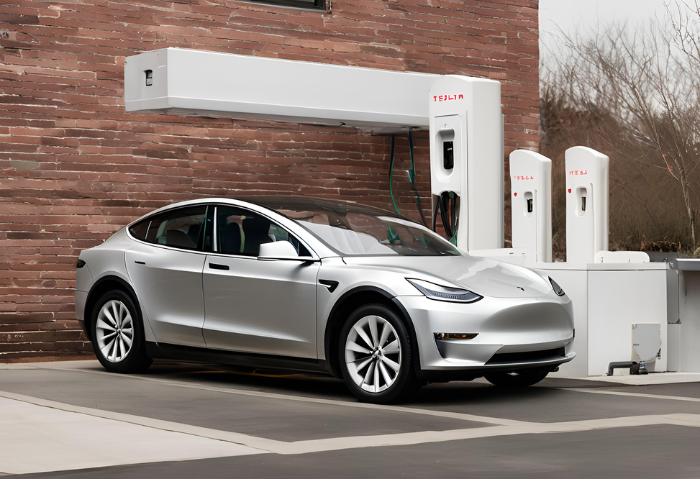
Solar-Powered Charging Stations
Solar Panels: Solar-powered charging stations are equipped with photovoltaic (PV) solar panels installed on rooftops, canopies, or standalone structures. These solar panels convert sunlight into electricity using semiconductor materials, typically silicon cells.
Energy Storage: To provide charging availability even when sunlight is not available, solar-powered charging stations often incorporate energy storage systems such as batteries. These batteries store excess solar energy generated during the day for use during periods of low sunlight or high demand.
Grid Connection: Solar-powered charging stations may be connected to the electrical grid to supplement solar energy with grid electricity when needed. Grid connection ensures uninterrupted charging availability, especially during periods of high demand or low solar output.
Charging Infrastructure: Solar-powered charging stations include EV charging infrastructure such as Level 2 chargers or DC fast chargers. These charging stations provide electric vehicle owners with access to renewable energy for charging their vehicles.
Smart Charging Technology: Some solar-powered charging stations are equipped with smart charging technology that optimizes charging schedules based on factors such as solar availability, grid demand, and EV owner preferences. This technology ensures efficient use of solar energy and maximizes charging capacity.
Location Considerations: Solar-powered charging stations are often installed in locations with ample sunlight exposure, such as open parking lots, highway rest stops, or areas with high EV traffic. Proper site selection is essential to maximize solar energy generation and charging efficiency.
Environmental Benefits: Solar-powered charging stations offer significant environmental benefits by reducing greenhouse gas emissions and reliance on fossil fuels for transportation. By utilizing renewable solar energy, these charging stations contribute to decarbonizing the transportation sector and combating climate change.
Cost Considerations: While solar-powered charging stations have higher upfront costs compared to conventional grid-powered chargers, they offer long-term savings on electricity costs and provide a sustainable energy solution. Incentives such as tax credits, rebates, and grants may help offset the initial investment in solar infrastructure.
Scalability and Integration: Solar-powered charging stations can be scalable and easily integrated into existing infrastructure or developed as standalone installations. They can be part of larger renewable energy projects or integrated with other sustainable transportation initiatives.
Public and Private Deployment: Solar-powered charging stations can be deployed in both public and private settings, including municipal parking lots, commercial facilities, workplaces, and residential developments. Publicly accessible solar-powered charging stations contribute to expanding the EV charging infrastructure and promoting renewable energy adoption.
Wind Power and Other Renewable Sources
Wind Power: Wind turbines harness the kinetic energy of wind to generate electricity. Wind power is a widely utilized renewable energy source for generating electricity on a large scale. Wind farms consist of multiple wind turbines strategically located in areas with high wind speeds, such as coastal regions or open plains.
Solar Power: Solar energy is obtained by harnessing sunlight through photovoltaic (PV) panels, which convert sunlight into electricity. Solar power is a clean and abundant renewable energy source that can be deployed on rooftops, parking canopies, or standalone installations to generate electricity for EV charging stations.
Hydropower: Hydropower, or hydroelectric power, generates electricity by harnessing the energy of flowing or falling water. Hydropower plants use dams, rivers, or tidal movements to generate electricity, providing a reliable and renewable energy source for powering EV charging infrastructure.
Biomass: Biomass energy is derived from organic materials such as wood, agricultural residues, or organic waste. Biomass can be converted into biogas, biofuels, or used directly for electricity generation, offering a renewable and carbon-neutral energy source for powering EV charging stations.
Geothermal Energy: Geothermal energy utilizes heat from the Earth’s core to generate electricity or provide heating and cooling. Geothermal power plants harness steam or hot water from underground reservoirs to drive turbines and generate electricity, offering a sustainable and reliable energy source for EV charging.
Renewable Energy Credits (RECs): Renewable energy credits allow EV charging station operators to purchase renewable energy from wind, solar, or other renewable sources even if they are not directly connected to renewable energy generation facilities. RECs represent the environmental attributes of renewable energy generation and help support the development of renewable energy projects.
Integration with Grid: EV charging stations can be integrated with the electrical grid to access renewable energy sources supplied to the grid. Grid-connected charging stations can draw electricity from renewable sources such as wind or solar farms, contributing to a cleaner and more sustainable charging infrastructure.
Carbon Offsets: EV charging station operators and users can offset their carbon emissions by purchasing carbon offsets from renewable energy projects. Carbon offsets represent reductions in greenhouse gas emissions achieved through renewable energy generation, helping mitigate the environmental impact of EV charging.
Energy Storage Solutions
Battery Energy Storage Systems (BESS):
BESS stores electricity in rechargeable batteries, allowing excess energy generated during periods of low demand or high renewable energy output to be stored for later use.
BESS can be integrated into EV charging stations to provide backup power during grid outages, peak demand periods, or when renewable energy sources are not available.
BESS help stabilize the grid by providing grid services such as frequency regulation, voltage support, and peak shaving, enhancing the overall reliability and resilience of EV charging infrastructure.
Vehicle-to-Grid (V2G) Technology:
V2G technology enables bidirectional energy flow between EVs and the grid, allowing EV batteries to serve as distributed energy storage devices.
EVs equipped with V2G technology can store excess energy from renewable sources or low-cost electricity during off-peak hours and discharge it back to the grid or EV charging stations when needed.
V2G technology facilitates demand response, grid balancing, and load management, optimizing the use of renewable energy and reducing electricity costs for EV owners and charging station operators.
Ultracapacitors:
Ultracapacitors, also known as supercapacitors, store electrical energy electrostatically and release it rapidly when needed.
Ultracapacitors complement battery storage systems by providing high-power, short-duration energy storage for rapid charging and discharging applications.
Ultracapacitors can improve the efficiency and performance of fast charging stations by delivering high-power bursts of energy during peak demand periods, reducing charging times and enhancing user experience.
Flywheel Energy Storage:
Flywheel energy storage systems store kinetic energy in a rotating mass (flywheel) and convert it back to electricity when needed.
Flywheel systems offer fast response times and high cycling capabilities, making them suitable for frequency regulation, voltage stabilization, and short-duration energy storage applications.
Flywheel energy storage complements battery storage systems by providing supplemental power and grid support services, improving the overall reliability and resilience of EV charging infrastructure.
Hydrogen Fuel Cells:
Hydrogen fuel cells convert hydrogen gas into electricity through an electrochemical process, offering an alternative energy storage solution for EV charging.
Hydrogen fuel cells can be integrated into EV charging stations to provide backup power, extend operating hours, or supplement renewable energy sources.
Hydrogen fuel cell technology enables long-duration energy storage and can serve as a clean and sustainable energy source for powering EVs and charging infrastructure.
Grid Impact and Demand Response
| Aspect | Grid Impact | Demand Response |
| Definition | The effect of EV charging on the electrical grid, including strain on infrastructure, voltage fluctuations, and grid congestion. | Programs and strategies that incentivize consumers to adjust electricity usage in response to grid conditions, price signals, or supply constraints. |
| Challenges | Grid congestion, voltage fluctuations, distribution network limitations, and peak demand periods. | Balancing electricity supply and demand, managing peak loads, reducing strain on the grid, and optimizing energy usage. |
| Solutions | Strategic charger deployment, infrastructure upgrades, smart charging technologies, and integration of renewable energy sources. | Time-of-use (TOU) pricing, dynamic pricing schemes, smart charging algorithms, and vehicle-to-grid (V2G) technology. |
| Objectives | Ensure grid reliability, stability, and capacity while accommodating growing EV adoption. | Reduce electricity costs, optimize energy usage, and promote grid flexibility and resilience. |
| Stakeholders | Utilities, grid operators, charging network operators, EV owners, policymakers, and regulatory agencies. | Utilities, energy service providers, grid operators, charging network operators, and EV owners. |
| Benefits | Mitigate grid impacts, optimize energy usage, support renewable energy integration, and enhance grid resilience. | Reduce peak demand, lower electricity costs, increase grid flexibility, and enhance grid stability. |
Environmental Benefits
Greenhouse Gas Emissions Reduction:
Compared to vehicles powered by conventional internal combustion engines, EVs have zero tailpipe emissions, significantly reducing greenhouse gas emissions. By transitioning to EVs, society can mitigate the impact of transportation on climate change and work towards decarbonizing the transportation sector.
Air Quality Improvement:
EVs produce fewer air pollutants, such as nitrogen oxides (NOx), particulate matter (PM), and volatile organic compounds (VOCs), compared to traditional vehicles. By reducing emissions from transportation, EVs contribute to improved air quality and public health, reducing the incidence of respiratory illnesses and cardiovascular diseases.
Renewable Energy Integration:
Renewable energy sources like solar, wind, and hydropower can power EV charging infrastructure, further reducing the carbon footprint of transportation. By integrating renewable energy into EV charging networks, stakeholders can maximize environmental benefits and promote sustainable energy practices.
Energy Efficiency:
EVs are inherently more energy-efficient than conventional vehicles, with electric motors converting a higher percentage of energy from the battery into vehicle propulsion. Additionally, EV charging infrastructure can leverage smart charging technologies and demand response strategies to optimize energy usage and reduce overall electricity consumption.
Resource Conservation:
EVs use fewer natural resources compared to internal combustion engine vehicles, which require fossil fuels such as gasoline or diesel. Additionally, the recycling and reuse of EV batteries contribute to resource conservation and minimize environmental impact at the end of battery life.
Noise Pollution Reduction:
EVs operate more quietly than traditional vehicles, particularly at lower speeds, reducing noise pollution in urban areas and enhancing the quality of life for residents. By transitioning to EVs, communities can enjoy quieter streets and reduced traffic noise.
Ecosystem Protection:
By reducing reliance on fossil fuels, EV adoption helps protect natural ecosystems from the environmental degradation associated with fossil fuel extraction, transportation, and combustion. Preserving ecosystems supports biodiversity, ecosystem services, and the overall health of the planet.
User Experience and Accessibility
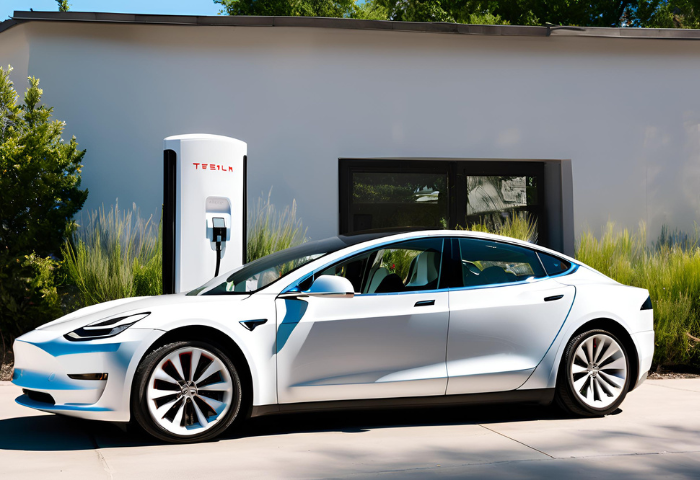
Mobile Apps for Charger Location and Availability
PlugShare:
PlugShare is one of the most widely used mobile apps for locating EV charging stations worldwide.
It provides a comprehensive map of charging stations, including Level 1, Level 2, and DC fast chargers, along with user reviews, photos, and charging network information.
PlugShare allows users to filter charging stations by network, connector type, and amenities, making it easy to find suitable charging options.
ChargePoint:
ChargePoint offers a mobile app that allows EV drivers to locate ChargePoint charging stations and check real-time availability.
The app provides detailed information on charging stations, including pricing, network status, and driver reviews.
ChargePoint’s app also enables users to start and stop charging sessions, monitor charging progress, and receive notifications when charging is complete.
Electrify America:
Electrify America’s mobile app provides access to its network of DC fast chargers across the United States.
Users can search for nearby charging stations, view availability status, and initiate charging sessions directly from the app.
The app offers features such as trip planning, charging session history, and payment management for a seamless charging experience.
Tesla Supercharger:
Tesla owners can use the Tesla Supercharger mobile app to locate Tesla Supercharger stations and plan their routes accordingly.
The app displays the real-time availability of Supercharger stalls, estimated charging times, and navigation directions to the nearest station.
Tesla Supercharger app users can also monitor charging sessions remotely and receive notifications when charging is complete.
ChargeHub:
ChargeHub provides a mobile app that allows users to find EV charging stations worldwide, including public, residential, and workplace chargers.
The app offers filters for charger types, networks, and amenities, as well as user reviews and ratings for charging stations.
ChargeHub’s app also includes features such as trip planning, route optimization, and integration with navigation apps for seamless navigation to charging stations.
Greenlots:
Greenlots offers a mobile app that enables EV drivers to locate Greenlots charging stations and initiate charging sessions.
The app provides real-time availability status, pricing information, and driver reviews for Greenlots chargers.
Greenlots’ app also offers features such as payment management, charging session history, and notifications for charging status updates.
User Interface and Payment Options at Charging Stations
User Interface:
Charging stations feature user-friendly interfaces that guide EV drivers through the charging process. This may include touchscreens, buttons, or mobile app integration.
The user interface displays essential information such as charging status, connector types, available charging power, and instructions for initiating a charging session.
Clear and intuitive graphical user interfaces (GUIs) help drivers navigate the charging process easily, regardless of their level of experience with EVs.
Payment Options:
Charging stations offer various payment options to accommodate different preferences and user profiles. Common payment methods include:
- Credit/Debit Cards: Users can pay for charging sessions using their credit or debit cards, swiping or tapping them at the charging station.
- Mobile Apps: Many charging networks offer mobile apps that allow users to initiate and pay for charging sessions using their smartphones. App-based payments provide convenience and flexibility.
- RFID Cards: Some charging networks issue RFID (Radio Frequency Identification) cards or key fobs that users can tap on the charging station to authenticate and pay for charging sessions.
- Membership Accounts: EV drivers may create accounts with charging networks and pre-load funds into their accounts to facilitate quicker payments for charging sessions.
Contactless payment methods, such as NFC (Near Field Communication) or QR code scanning, are becoming increasingly popular, offering a convenient and hygienic payment experience for users.
Charging stations may also offer free or complimentary charging for certain users, such as members of loyalty programs, EV owners of specific brands, or participants in promotional campaigns.
Accessibility Features:
Charging stations may incorporate accessibility features such as voice prompts, tactile buttons, and audible feedback for users with visual or hearing impairments.
Clear signage, contrasting colors, and universal symbols help users identify charging stations and understand the charging process, promoting inclusivity and accessibility.
Multilingual Support:
Charging stations may support multiple languages to accommodate users from diverse linguistic backgrounds. Multilingual interfaces and instructions ensure that all users can easily navigate the charging process and access essential information.
Accessibility Features for Disabled Users
ADA-Compliant Design:
Charging stations should comply with the Americans with Disabilities Act (ADA) guidelines, which set standards for accessibility in public facilities. This includes provisions for accessible parking spaces, route access, and signage for disabled users.
ADA-compliant charging stations should have designated accessible parking spaces with appropriate signage and markings, providing sufficient space for wheelchair users to park and access the charging equipment.
Wheelchair Accessibility:
Charging stations should be designed to accommodate wheelchair users, with clear pathways and maneuvering space around the charging equipment.
Charging station interfaces, controls, and payment terminals should be positioned at accessible heights and reachable from a seated position, allowing users in wheelchairs to operate the equipment comfortably.
Tactile and Braille Signage:
Charging stations should feature tactile and Braille signage to provide information and instructions for users with visual impairments. This includes signage indicating the location of charging stations, accessible parking spaces, and charging equipment.
Audible Feedback:
Charging station interfaces may incorporate audible feedback or voice prompts to assist users with visual impairments in navigating the charging process. Audible cues can provide confirmation of user inputs and guide users through the steps required to initiate a charging session.
Universal Design Principles:
Charging stations should adhere to universal design principles, which aim to create products and environments that are usable by people of all ages and abilities.
Features such as large, high-contrast buttons, clear signage with universal symbols, and intuitive user interfaces enhance usability and accessibility for users with disabilities.
Remote Accessibility:
Some charging networks offer mobile apps or online platforms that allow users to locate, reserve, and initiate charging sessions remotely. Remote accessibility features provide convenience and flexibility for users with mobility or sensory impairments.
Assistance Services:
Charging station operators may offer assistance services for disabled users, such as onsite support staff or helplines for troubleshooting and guidance.
Accessible customer support channels ensure that disabled users can access assistance when needed and receive prompt assistance with any issues or concerns.
Customer Support and Assistance
Onsite Support Staff:
Some charging stations are equipped with onsite support staff who can assist EV drivers with charging-related issues, questions, or concerns.
Onsite support staff may provide guidance on using the charging equipment, troubleshooting common problems, and accessing additional amenities or services at the charging location.
Helpline or Customer Service Hotline:
Charging networks and operators often provide a helpline or customer service hotline that EV drivers can contact for assistance with charging-related inquiries or issues.
The helpline may offer support for account management, billing inquiries, technical support, and general information about charging network policies and procedures.
Online Support Resources:
Charging networks may offer online support resources such as FAQs, user guides, and troubleshooting articles on their website or mobile app.
EV drivers can access these resources to find answers to common questions, learn about charging station features and functionality, and troubleshoot issues independently.
Mobile Apps and Remote Assistance:
Some charging networks provide mobile apps that allow EV drivers to access customer support features, such as initiating a support ticket, contacting customer service, or receiving remote assistance.
Mobile apps may also offer features for locating nearby charging stations, checking availability, and managing charging sessions, enhancing the overall user experience.
Accessibility Features:
Charging stations should incorporate accessibility features such as tactile signage, audible cues, and Braille instructions to assist users with disabilities in accessing customer support resources.
Accessibility considerations ensure that all EV drivers, including those with disabilities, can easily access assistance services and receive support when needed.
Timely Response and Resolution:
Charging network operators should strive to provide prompt and efficient customer support, responding to inquiries and resolving issues in a timely manner.
Timely response and resolution contribute to positive user experiences, building trust and confidence in the reliability and accessibility of EV charging infrastructure.
Reviews and Ratings of Charging Stations
Online Platforms and Mobile Apps:
Online platforms and mobile apps dedicated to EV charging, such as PlugShare, ChargePoint, and others, allow users to submit reviews and ratings for charging stations they have visited.
Users can provide feedback on factors such as charging speed, reliability, cleanliness, amenities, and overall experience at the charging location.
Reviews and ratings are displayed alongside charging station listings, helping EV drivers assess the quality and suitability of charging stations before visiting them.
Charging Network Websites:
Charging network operators often feature reviews and ratings of their charging stations on their websites.
Users may be invited to leave reviews after completing a charging session, sharing their opinions and experiences with others in the EV community.
Charging network websites may also aggregate reviews from multiple sources to provide comprehensive insights into the performance and user satisfaction of their charging stations.
Third-Party Review Platforms:
Third-party review platforms, such as Google Maps, Yelp, and TripAdvisor, may also feature reviews and ratings of EV charging stations.
EV drivers can contribute reviews and ratings to these platforms, sharing their experiences with a broader audience beyond the EV community.
Integrating charging station reviews with popular review platforms increases visibility and accessibility for users searching for charging locations.
User-Generated Content:
In addition to formal reviews and ratings, EV drivers may share their experiences with charging stations through social media, forums, and online communities.
User-generated content, such as blog posts, vlogs, and social media posts, can provide personal insights and recommendations based on real-world experiences.
Aggregate Ratings and Trends:
Charging station platforms often aggregate reviews and ratings to generate overall ratings for each charging station.
These aggregate ratings may consider factors such as the number of reviews, average ratings, and recent feedback to provide an accurate representation of user satisfaction and station performance.
Policy and Regulation Impacting Level 3 Charging

International Standards for EV Chargers
IEC 62196 (Type 2):
IEC 62196, also known as the Type 2 connector standard, is widely used in Europe for the AC charging of electric vehicles.
It specifies the design, dimensions, and performance requirements for the Type 2 connector, which is used for slow and fast AC charging.
IEC 61851 (Charging Interface):
IEC 61851 is a series of standards that define the charging interface for electric vehicles, including communication protocols and charging modes.
It specifies the communication between the EV and the charging infrastructure, ensuring interoperability and compatibility across different manufacturers.
ISO 15118 (Vehicle-to-Grid Communication):
ISO 15118 is an international standard for vehicle-to-grid (V2G) communication, enabling bidirectional communication between EVs and charging infrastructure.
It facilitates smart charging, grid integration, and vehicle-to-grid (V2G) applications, allowing EVs to provide grid services and support renewable energy integration.
CHAdeMO:
The CHAdeMO Association created the DC fast charging protocol known as CHAdeMO, which is most popular in Asia and Europe.
It enables high-power DC charging for electric vehicles and is commonly found in public fast charging stations.
CCS (Combined Charging System):
The CharIN (Charging Interface Initiative) association developed CCS, an international standard for DC fast charging.
It combines the Type 2 AC connector with additional DC pins, allowing for both AC and DC charging through a single connector.
Automakers and providers of charging infrastructure have adopted CCS widely, particularly in North America and Europe.
GB/T 20234 (China):
GB/T 20234 is a Chinese national standard for EV charging, specifying the physical connector and communication protocol for AC and DC charging.
It is used for both slow and fast charging of electric vehicles in China.
Government Incentives and Subsidies
Purchase Incentives:
Tax Credits: Governments may offer tax credits or rebates to consumers who purchase new electric vehicles. These credits can offset a portion of the vehicle’s purchase price, making EVs more affordable.
Vehicle Rebates: Direct rebates or cash incentives may be provided to EV buyers upon purchase, reducing the upfront cost of the vehicle.
Vehicle Registration Discounts: Some jurisdictions offer discounts or exemptions on vehicle registration fees for electric vehicles, providing ongoing savings for EV owners.
Charging Infrastructure Incentives:
Charging Station Rebates: Governments may offer rebates or financial incentives to individuals or businesses for the installation of EV charging stations at home, workplaces, or public locations.
Charging Infrastructure Grants: Funding programs or grants may be available to support the deployment of public charging infrastructure, including fast chargers and network expansion projects.
Tax Incentives for Charging Equipment:
Tax Deductions: Businesses and property owners who install EV charging equipment may be eligible for tax deductions or incentives to offset the costs of installation.
Accelerated Depreciation: Accelerated depreciation schedules or tax incentives may be offered for businesses investing in EV charging infrastructure, encouraging investment in sustainable transportation solutions.
Incentives for Fleet Adoption:
Fleet Rebates: Governments may offer incentives or rebates to fleets that transition to electric vehicles, encouraging the adoption of EVs in commercial and government fleets.
Low-Emission Zones (LEZ) Access: Access to low-emission zones or preferential parking may be granted to fleets with a certain percentage of electric vehicles, incentivizing fleet electrification.
Infrastructure Investment Programs:
Grants and Funding Programs: Governments may allocate funding for research, development, and deployment of EV technology, charging infrastructure, and related initiatives.
Public-Private Partnerships: Collaborative efforts between governments, utilities, and private sector stakeholders may be established to invest in EV infrastructure and accelerate adoption.
Consumer Education and Awareness Programs:
Incentive Awareness Campaigns: Governments may run public awareness campaigns to educate consumers about the benefits of electric vehicles and available incentives, encouraging adoption.
Local Zoning and Building Codes
Zoning Regulations
- Land Use Zoning: Zoning regulations determine where EV charging stations can be installed within a community, considering factors such as land use, zoning districts, and permitted uses.
- Permitting Process: Zoning codes may require permits for the installation of EV charging stations, ensuring compliance with local regulations and building standards.
- Parking Requirements:
- Minimum Parking Standards: Zoning codes may specify minimum parking requirements for developments, including provisions for EV charging infrastructure such as dedicated EV parking spaces or charging stations.
- EV-Ready Parking Spaces: Some jurisdictions mandate the inclusion of EV-ready parking spaces in new developments, with pre-wiring or infrastructure provisions to support future EV charging installations.
Building Codes
- Electrical Code Compliance: Building codes govern the electrical installation and wiring of EV charging stations, ensuring compliance with safety standards and regulations such as the National Electrical Code (NEC) or local electrical codes.
- Structural Requirements: Building codes may specify structural requirements for the installation of EV charging infrastructure, including considerations for mounting, anchoring, and load-bearing capacity.
- Accessibility Standards:
- ADA Compliance: EV charging stations must comply with accessibility standards outlined in the Americans with Disabilities Act (ADA), ensuring accessibility for individuals with disabilities.
- Accessible Parking Spaces: Zoning and building codes may require accessible parking spaces with EV charging capabilities, providing equal access to EV charging for all users.
Aesthetic Considerations
- Design Guidelines: Some communities have design guidelines or architectural standards that govern the aesthetics of EV charging infrastructure, ensuring compatibility with surrounding built environments and landscapes.
- Screening and Buffering Requirements: Zoning codes may include provisions for screening or buffering EV charging stations from view, addressing visual impacts and neighborhood compatibility concerns.
Utility and Service Requirements
- Electrical Service Capacity: Building codes may address requirements for electrical service capacity to support EV charging infrastructure, ensuring adequate power supply and distribution.
- Utility Coordination: Zoning and building codes may require coordination with utility providers for the installation and connection of EV charging stations to the electrical grid.
Overall, Tesla Superchargers play a crucial role in enabling long-distance travel and supporting the widespread adoption of electric vehicles. With their rapid charging speeds, extensive network coverage, and seamless integration with Tesla vehicles, superchargers provide Tesla owners with a convenient and reliable charging solution for their electric vehicles.

Henry Michael is a leading expert in EV charging station research, specializing in innovative solutions for electric vehicle infrastructure. With a passion for sustainability and technological advancement, he is dedicated to advancing the accessibility and efficiency of EV charging worldwide.

